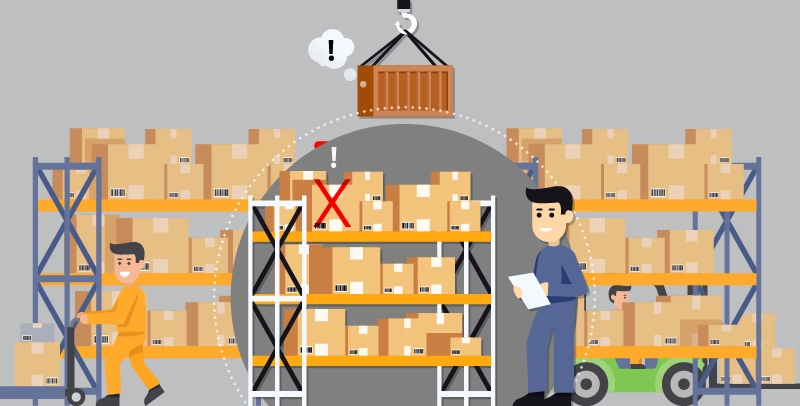 In manufacturing, effective damage and claim management within warehouse operations can be a game-changer. For logistics managers, warehouse managers, and third-party logistics (3PL) providers, minimizing losses, reducing operational downtime, and maintaining customer trust are top priorities. With the right warehouse management system (WMS), businesses can not only streamline these processes but also boost efficiency by automating damage detection, real-time inventory tracking and claims resolution.
In manufacturing, effective damage and claim management within warehouse operations can be a game-changer. For logistics managers, warehouse managers, and third-party logistics (3PL) providers, minimizing losses, reducing operational downtime, and maintaining customer trust are top priorities. With the right warehouse management system (WMS), businesses can not only streamline these processes but also boost efficiency by automating damage detection, real-time inventory tracking and claims resolution.
Automating Damage Detection and Recording for Warehouse Management
A key challenge in any warehouse is the accurate documentation of damaged products during receiving or handling. A robust
damage reporting system for WMS solves this problem by automating the recording process. The system meticulously logs every instance of damage, detailing the item type, quantity, and condition, which reduces the chances of oversight or human error. With
damage detection software for warehouse management, logistics teams can ensure that all damaged products are recorded in real-time, allowing quicker responses and smoother operations.
Automated Warehouse Management System for Efficient Resolution Workflow
Once damaged goods are identified, an
automated WMS initiates a quarantine process, separating the damaged items from the regular inventory to prevent further complications. The WMS ensures that the damaged products are moved to a designated area for assessment, storage, or return as per customer instructions. A streamlined
resolution workflow enables seamless transitions from quarantine to storage or replacement, reducing downtime and maintaining operational flow. This automation ensures that every step is efficiently managed, saving time and preventing bottlenecks.
Real-Time Warehouse Inventory Tracking and Customer Communication
In warehouse management, real-time tracking is essential for maintaining transparency and trust with customers. With
real-time warehouse inventory tracking, the WMS automatically notifies customers via detailed reports when product damage is detected. These notifications contain crucial information such as the type and severity of the damage, along with actions being taken to resolve the issue. This transparency builds customer confidence, knowing their concerns are handled promptly and professionally.
Streamlined Claims Management
Handling product claims efficiently is vital for maintaining operational and financial control. A
Warehouse Management System for Claims & Damage Handling centralizes claim records, enabling swift processing by warehouse teams and the QHSE (Quality, Health, Safety, and Environment) department. This centralization ensures that claims are managed accurately, reducing delays in compensation and replacements while ensuring compliance with safety standards.
Safeguarding Warehouse Infrastructure
In addition to product damage, warehouses need to monitor the infrastructure itself. An
automatic warehouse damage detection system can flag issues like
damaged warehouse racking and other critical areas, allowing timely intervention before it impacts operations. This preventive approach ensures warehouse infrastructure remains safe, reducing the risk of further damage to goods and maintaining workplace safety.
Conclusion
A well-designed WMS, with features like automated damage detection, real-time warehouse inventory tracking, and centralized claims management, is essential for the manufacturing industry. By addressing common warehouse challenges and ensuring seamless operations, this system empowers logistics and warehouse managers to minimize losses, maintain customer trust and ensure smooth operations.
Contact us to explore our advanced automated warehouse management solutions and transform your damage and claims handling.
 In manufacturing, effective damage and claim management within warehouse operations can be a game-changer. For logistics managers, warehouse managers, and third-party logistics (3PL) providers, minimizing losses, reducing operational downtime, and maintaining customer trust are top priorities. With the right warehouse management system (WMS), businesses can not only streamline these processes but also boost efficiency by automating damage detection, real-time inventory tracking and claims resolution.
In manufacturing, effective damage and claim management within warehouse operations can be a game-changer. For logistics managers, warehouse managers, and third-party logistics (3PL) providers, minimizing losses, reducing operational downtime, and maintaining customer trust are top priorities. With the right warehouse management system (WMS), businesses can not only streamline these processes but also boost efficiency by automating damage detection, real-time inventory tracking and claims resolution.